The Best Video Game to Learn Spanish
Inside: Get to know Barkelona, your Spanish students’ new favorite game.
We know that students acquire language best when they are totally interested in what they’re doing. And if your kids are anything like mine, they love video games!
If you have bilingual kids who need to practice their Spanish, you can change the language settings of many games to the Spanish language (Legend of Zelda, Pokémon, The Elder Scrolls v. Skyrim, Dragon Age: Origins, Rise of the Tomb Raider, etc.).
However, if you are working with beginner Spanish language learners, you can’t just switch the language to Spanish and expect them to learn (Language that looks overwhelming doesn’t build Spanish skills– comprehension is what we’re going for!)
For that, you need a video game designed specifically for language learners. I’ve invited the creators of Barkelona to share their Spanish video game solution in this blog post, because I think it’s a great solution for grabbing the attention of our little gamers and acquire new vocabulary and Spanish grammar without even knowing it!
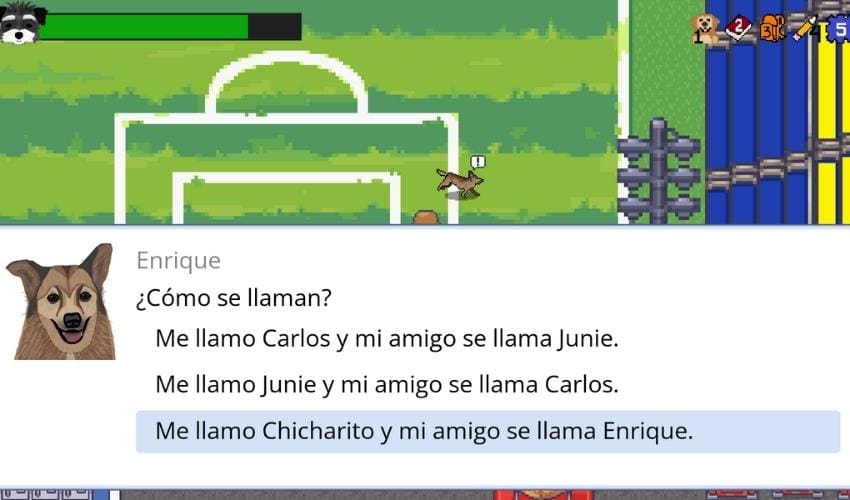
Barkelona is content-appropriate for all age levels (no violence, no swearing, no alcohol references) and does not require any prior knowledge of Spanish to play.
Why You Should High Tail It to Barkelona.com
Picture it: A Spanish learning video game (perfect for classrooms, parents, and learners alike) that’s filled with quests, challenges, puzzles, mini games, fun cultural tidbits, and a whole pack of cute dogs. Sounds pretty neat, right? Well, throw in a little mystery, some sly feline foes, and tons of situational context for language learning and you’ve got Barkelona!
Barkelona is an online Spanish video game that helps students acquire Spanish through comprehensible input. Since the concept of using an adventure-based video game in the Spanish learning community is relatively new, we’ll chat a little bit about how the game is played. Then, we’ll get into the reasons Barkelona is useful for both Spanish teachers and learners.
Barkelona is a 2D video game that is written almost entirely in simplified Spanish (there are a few English words at the beginning to help the player learn to navigate the game controls). The game centers around the player’s friendship with their canine companion, Carlos Segundo.
As the player tries to maximize peppy pooch Carlos’s happiness, they explore the fictional Spanish city of Barkelona, a vibrant place full of talking dogs and other humans to befriend. These NPCs (Non-Player Characters) need help completing a variety of quests: “fetching” items, like sunscreen or tomatoes, uncovering information, like which is the oldest painting in the museum, and plot-based quests, like finding the neighbor’s missing cat. Completing each quest requires the player to negotiate conversations and read plenty of text. Nothing teaches like experience, and Barkelona gives each learner the experience of building language skills through conversation.
While the story is rich, playing Barkelona is simple and doesn’t require a lot of gaming skill, a special console, or fancy gaming gear. Players use the arrow keys or an onscreen touch pad to move the character around. To interact with objects, the player clicks with the mouse or track pad. And to converse with NPCs, players simply click the dialogue option they prefer. The easy controls keep the focus where it should be, language learning!
Barkelona offers a number of useful gameplay features for a Spanish learner. There is an in-game dictionary that updates with new Spanish words as the game progresses. The player also has access to an inventory to keep track of the items they collect and a quest journal that reminds them of the missions they are trying to accomplish. To learn even more vocabulary, the player can click on objects in the environment and discover what they are called in Spanish. Players can save their progress at any time and load their saved game at a later date.
As if the wacky, varied quests of the main game aren’t enough, many of the Barkelona locations include minigames that provide novelty and a break in the action. These games reinforce the content of the main game and help students practice themed basic vocabulary topics and Spanish grammar concepts, such as foods, clothing, numbers, and adjective agreement.
Take a tour here:
All right, sounds like a fun game, but let’s talk about who would benefit from using Barkelona!
Spanish teachers who use Comprehensible Input
As a Spanish teacher in a CI-focused classroom, I know that I am constantly hunting for new sources of input for my students. I love telling stories and chatting about video clips, but it’s helpful to have a reliable source of comprehensible language that students can access independently.
There are all kinds of situations where this is useful. The obvious example is days that you’re literally not in your classroom – sick days and professional development days. Lately, it can be hard to secure a substitute at all, much less a Spanish-speaking substitute. If your class ends up getting covered by 6 different co-workers, or a retired math teacher who can’t follow your Spanish lesson plans, it’s nice to know your students can play a Spanish video game and still access quality input.
Barkelona is also helpful for times when you need to work with individual students or small groups. As a personal example, this year my Spanish 1 classes are composed of 7th, 8th and 9th graders (about evenly mixed), many of whom have 504s, IEPs and behavior plans. In addition, I have quite a few heritage speakers mixed in throughout my Spanish 1 and 2 classes. I am glad that so many diverse types of students are choosing to learn world languages. However, it means that I need to do some serious differentiation if I’m going to reach a 7th grader with ADHD and a 9th grade Spanish-speaking honors student in the same class.
Recently, I’ve been setting students up playing Barkelona while I work with small groups and individuals who needed extra assistance with assignments. I was also able to discuss a Spanish-language novel with one of my native speakers. While we were working, the other 85% of my students were highly engaged and stayed on task. I felt good knowing they were basically spending that whole time reading comprehensible input in the form of conversations with NPCs. It even worked well as a behavior incentive for my student with Oppositional Defiant Disorder: he was willing to complete a missing writing assignment so he would have time to find the tomatoes for Chef Antonio in Barkelona. In his words, “This game is FIRE!” 😂🔥
Finally, Barkelona is a lifesaver on those days when you’re present, but you just can’t be “on” anymore. A video game will never replace Sustained Silent Reading time in my classroom, but it’s nice to have a second option in addition to traditional novels.
And the best news? Teachers who subscribe to Barkelona get access for all of their students for one year. No downloads or student accounts are required, and there are no ads, outside links or chat features. The teacher provides an access code to allow students to play, and students save their progress on their own device. At the moment, there isn’t a mobile option, so players should plan to play on a PC, laptop or Chromebook.
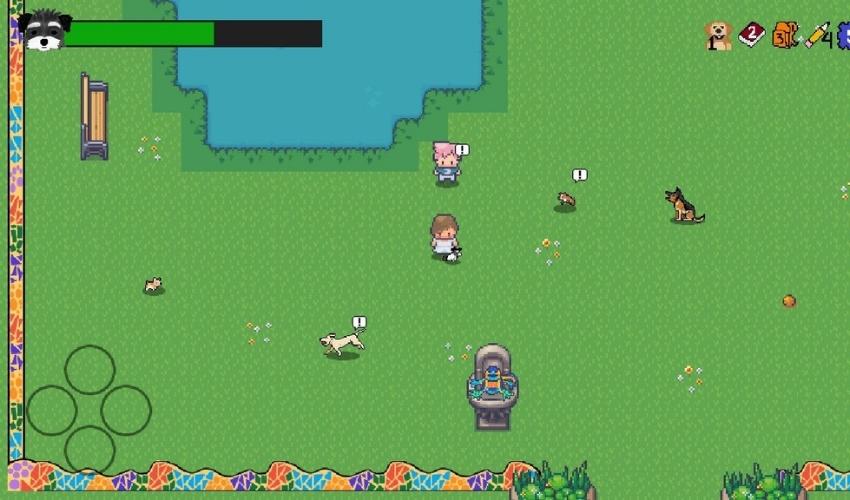
Parents who want to raise a bilingual child
I have spoken with many parents who want their child to start learning Spanish while they are young, but don’t speak Spanish themselves. Some districts offer bilingual education, but many do not, and homeschool parents need resources as well. I’ve also met Spanish-speaking parents who want their children to have more exposure to written Spanish, in addition to hearing it at home.
A Spanish learning video game is a great option for each of these families. Barkelona is content-appropriate for all age levels (no violence, no swearing, no alcohol references) and does not require any prior knowledge of Spanish to play. Any child old enough to read could play independently, or parents might enjoy learning alongside their child. A friend of mine has been playing Barkelona with her ten-year-old son who has Autism. It has been a nice bonding experience for them to learn some Spanish together.
And for budget-conscious families, the best part is that no subscription is required for individuals and families who want to play Barkelona! One copy of the game can be purchased on Steam or Itch.io and downloaded to a desktop or laptop. Not only that, but free updates are included for the life of the game.
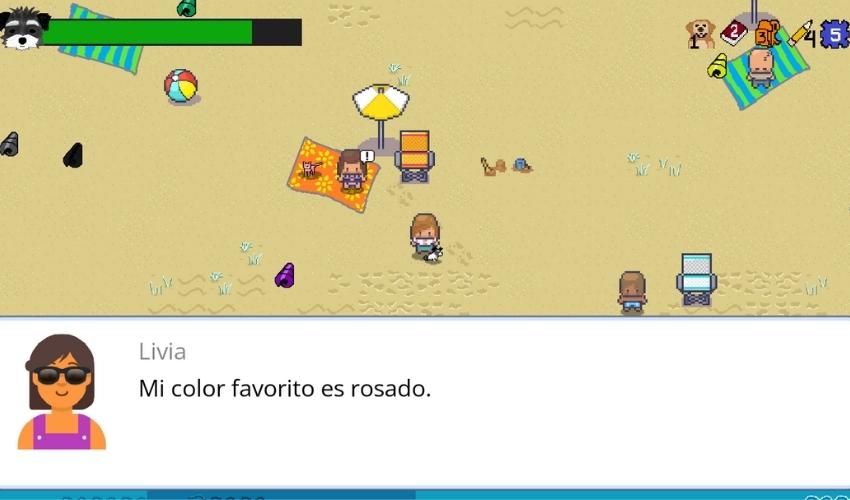
Spanish learners who need a break from drill-focused apps
There are many other language-learning apps that use spaced repetition of grammar and Spanish vocabulary exercises to teach a language. Typically, players earn achievements for more time spent studying. While these apps can be effective for a motivated student, most users eventually drop off these kinds of apps before reaching their goals. One reason for that is these apps typically decontextualize words and phrases in a way that can be pretty dry. (Hi, verb conjugations!)
In contrast, Barkelona is a true video game. It focuses more on conversational interactions, completing quests, contextualized reading, and of course, fun! The game is highly interactive and encourages play for its own sake.
As you can see, Barkelona will have all Spanish learners wagging their tails and begging for more time to explore this fantastic city! We suggest you put your paws into action and get over to Barkelona for more information!
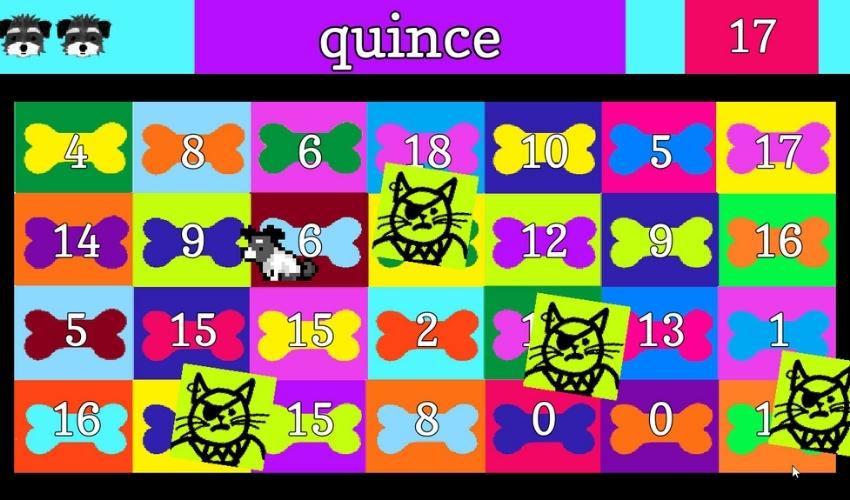
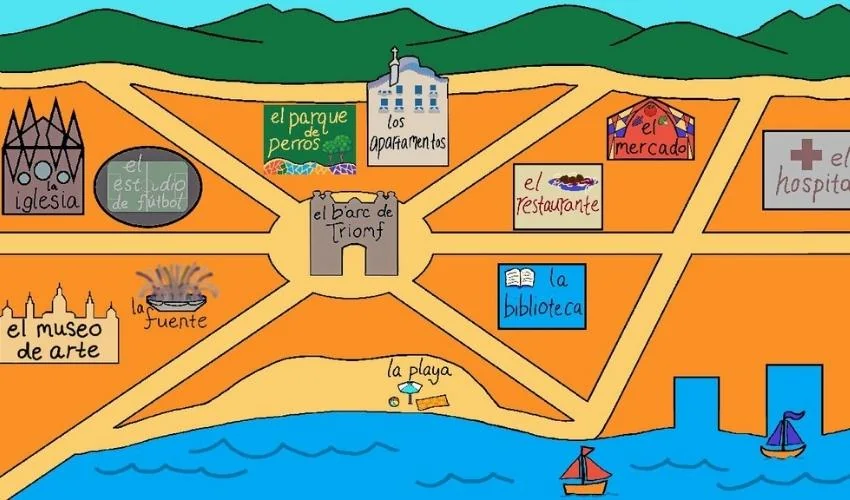




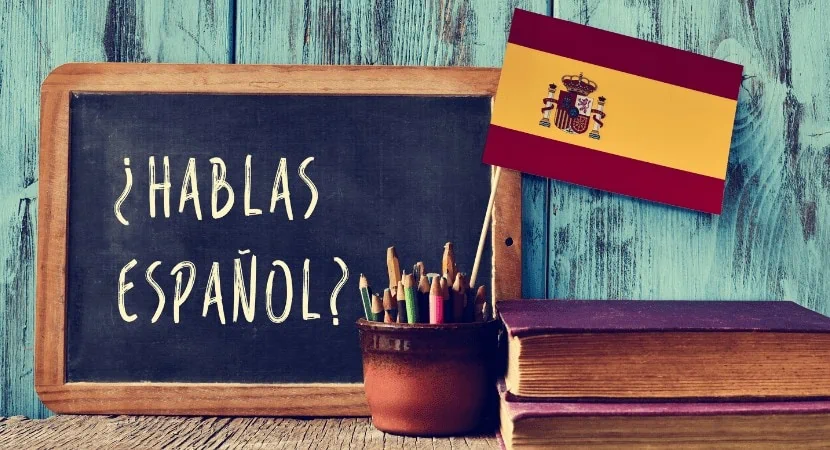

The Barkelona video game looks like a lot of fun for learners of Spanish!